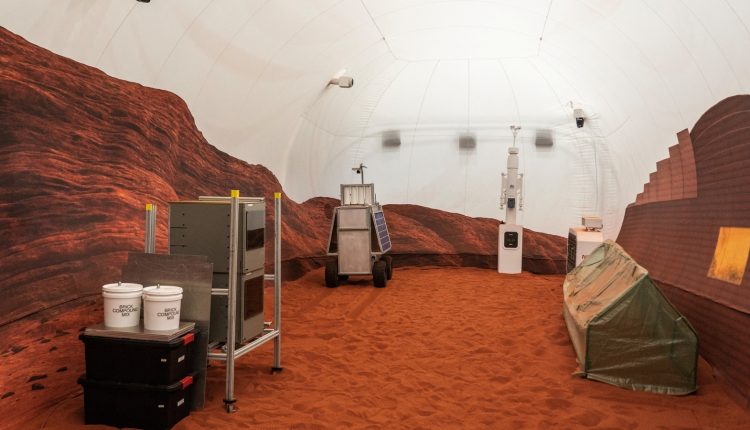Four small rooms, a gym and a lot of red sand — NASA unveiled on Tuesday its new Mars-simulation habitat, in which volunteers will live for a year at a time to test what life will be like on future missions to Earth’s neighbor.
The facility, created for three planned experiments called the Crew Health and Performance Exploration Analog (CHAPEA), is located at the US space agency’s massive research base in Houston, Texas.
Four volunteers will begin the first trial this summer, during which NASA plans to monitor their physical and mental health to better understand humans’ fortitude for such a long isolation.
With that data, NASA will better understand astronauts’ “resource use” on Mars, said Grace Douglas, lead researcher on the CHAPEA experiments.
“We can really start to understand how we’re supporting them with what we’re providing them, and that’s going to be really important information to making those critical resource decisions,” she said on a press tour of the habitat.
Such a distant mission comes with “very strict mass limitations,” she added.
The volunteers will live inside a 1,700 square-foot (160 square-meter) home, dubbed “Mars Dune Alpha,” which includes two bathrooms, a vertical farm to grow salad, a room dedicated to medical care, an area for relaxing and several workstations.
An airlock leads to an “outdoor” reconstruction of the Martian environment — though still located inside the hangar.
Several pieces of equipment astronauts would likely use are scattered around the red sand-covered floor, including a weather station, a brick-making machine and a small greenhouse.
There is also a treadmill on which the make-believe astronauts will walk suspended from straps to simulate the red planet’s lesser gravity.
“We really can’t have them just walking around in circles for six hours,” joked Suzanne Bell, head of NASA’s Behavioral Health and Performance Laboratory.
Four volunteers will use the treadmill to simulate long trips outside to collect samples, gathering data or building infrastructure, she said.
The members of the first experiment team have yet to be named, but the agency stated that selection “will follow standard NASA criteria for astronaut candidate applicants,” with a heavy emphasis on backgrounds in science, technology, engineering and math.
Researchers will regularly test the crew’s response to stressful situations, such as restricting water availability or equipment failures.
The habitat has another special feature: it was 3D-printed.
“That is one of the technologies that NASA is looking at as a potential to build habitat on other planetary or lunar surfaces,” Douglas said.
NASA is in the early stages of preparation for a mission to Mars, though most of the agency’s focus is on upcoming Artemis missions, which aim to return humans to the Moon for the first time in half a century.


